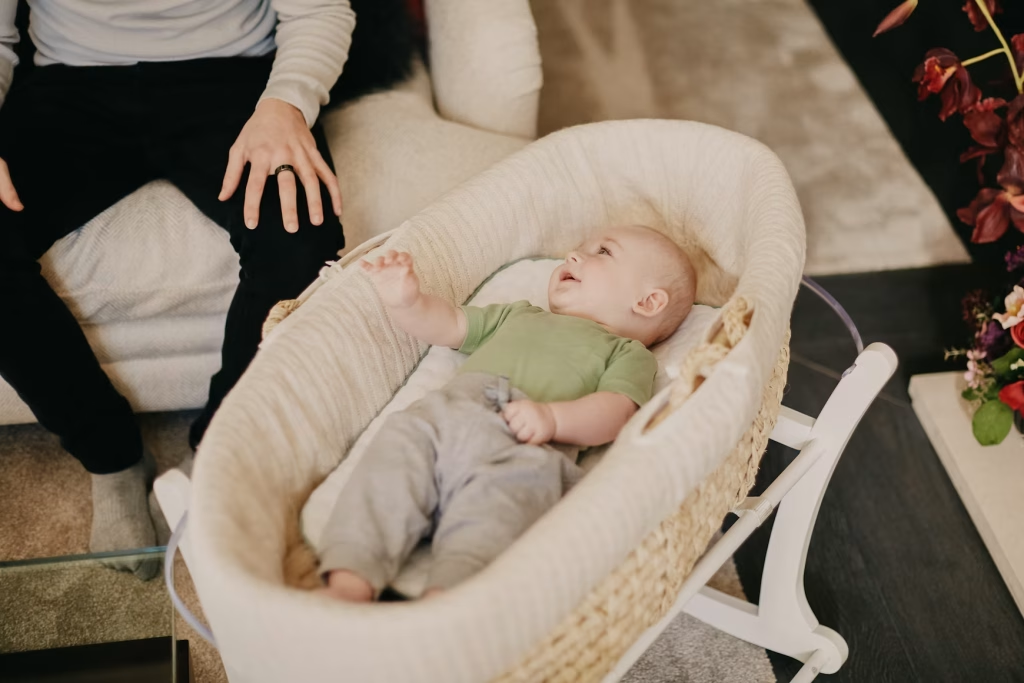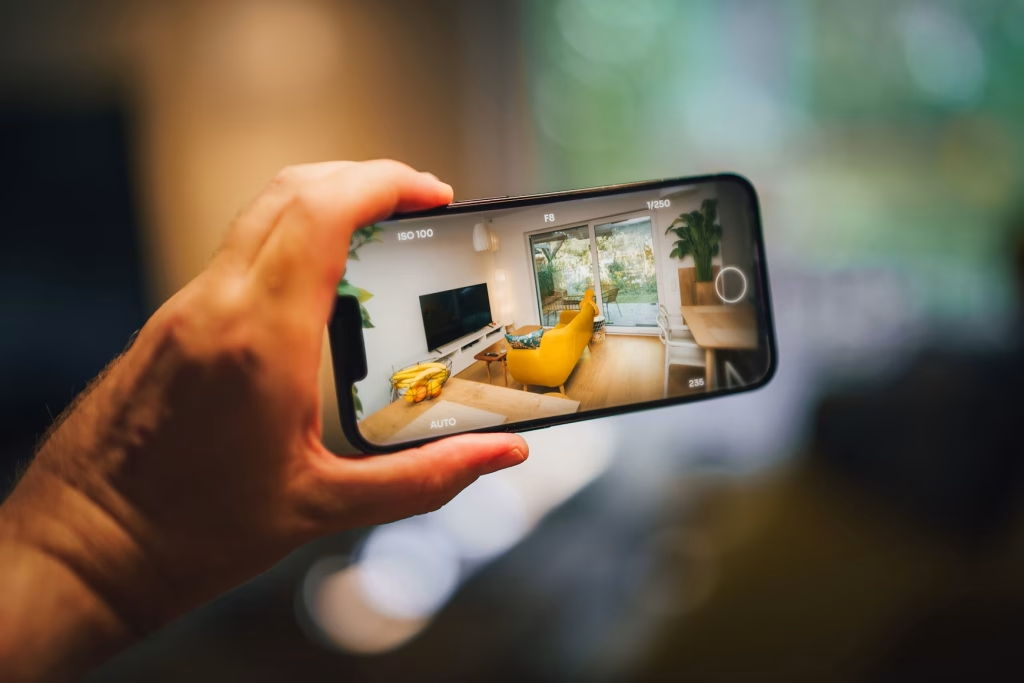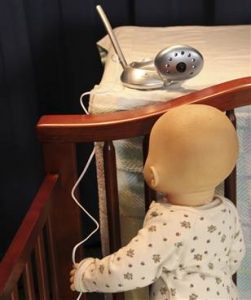
A baby monitor feels like a superhero gadget—standing guard so you can catch your breath, prep a bottle, or simply hear the comforting rustle of your little one breathing. Yet monitors, whether audio, video, or wearable, carry hidden downsides. Low-level radiation, hacking risks, and false alarms can turn a high-tech helper into an energy-sapping stressor.
Before you rest your peace of mind on a blinking LED, take ten minutes to learn the truths most companies skip in their marketing copy. You don’t need to ditch your monitor; you just need to use it wisely.
1. Wireless Baby Monitors Emit Radiation
Most modern baby monitors transmit via Wi-Fi, Bluetooth, or DECT radio frequencies. That invisible signal makes crisp video feeds possible, but it also means continuous electromagnetic radiation. Every wireless baby monitor sold in North America emits high-frequency energy—even when “idle.” Research on the long-term effects of low-level exposure is inconclusive, yet infants’ rapidly developing brains and thinner skulls worry many pediatric specialists.
Simple tweaks help: place the transmitter at least three feet from the crib, activate eco or VOX (voice-activated) modes when possible. Power the unit down for daytime naps if you’re working in the next room.
2. Placement Matters More Than You Think
You’d be shocked how often parents mount a camera directly above the crib, cables dangling like enticing toys. A monitor that slips or a cord that drapes within reach can create a strangulation hazard in seconds. JPMA Cares urges caregivers to secure cords against walls and to keep devices a minimum of three feet from any sleep surface. Angle the camera from a shelf or wall bracket. Zoom features on many models compensate for distance. Proper placement also improves picture clarity, since the lens isn’t fighting crib slats or shadows.
3. Vital-Sign Monitors Aren’t Always Accurate
Sock sensors and belly bands that track oxygen saturation promise early warning during respiratory dips. The reality is more nuanced. In controlled lab settings, many devices work well—but nurseries aren’t labs. A study at the Children’s Hospital of Philadelphia recorded frequent false alarms and missed events on several popular wearables. Parents jolted from sleep by false positives often develop alarm fatigue, eventually ignoring alerts.
If you use a vitals monitor, follow manufacturer instructions to the letter. Choose the correct sock size, avoid lotions that interfere with sensors, and discuss any repeated warnings with your pediatrician instead of relying purely on the app.
4. FDA Approval Is Rare—But It Matters
Because most baby monitors are classified as wellness devices, they bypass strict medical evaluation. That changed in 2023 when one pulse-oximeter earned Food and Drug Administration clearance for home use in medically supervised cases. FDA review verifies accuracy and safety under certain conditions—yet even a cleared device isn’t a free pass. Clearance applies to infants between specific weight and age ranges and is meant to supplement professional care. If your child faces respiratory or cardiac concerns, ask whether prescription-level monitoring is warranted. For healthy babies, safe-sleep routines—flat surface, firm mattress, no loose blankets—remain more protective than any gadget.

5. Smartphone-Connected Monitors Have Big Limitations
Turning your phone into a monitoring hub sounds efficient—until the app crashes during nap time. Reviews in medical journals list inconsistencies in data capture and transmission for many app-based products. Video lag, weak Wi-Fi signals, and unverified metrics can lull parents into a false sense of security. To reduce glitches, place your router centrally, update firmware promptly, and avoid power-saving modes that throttle background apps. Treat push notifications as helpful prompts, not unquestionable truth—always verify if something seems off.
6. Not All Alerts Are Helpful
You buy a monitor for reassurance. However, some models ping your handset every time the nursery fan oscillates. Over-sensitivity can compound sleep deprivation and make nights even more exhausting. Before declaring the unit defective, explore the settings menu. Adjust motion thresholds, lengthen sound-delay timers, or disable secondary alerts like humidity reports at three in the morning. A streamlined profile focuses on real risks—sustained crying, prolonged stillness—rather than harmless wiggles.
7. Your Baby Isn’t the Only One Being Watched
Baby-monitor hacking stories sound like urban legends until you read accounts of strangers speaking through a nursery camera. The risk spikes when families reuse default passwords or skip firmware updates. Create a unique, complex password, update software regularly, and enable two-factor authentication whenever the feature exists. For extra protection, place the monitor on a guest or IoT network separate from laptops and banking devices. Finally, disable remote access when you’re away. Unused features are essentially unlocked doors.
What This Means for You
Baby monitors are powerful tools—but they’re not magical shields. Think of yours as one layer in a broader safety strategy that includes safe-sleep positioning, regular pediatric visits, and plain-old parental instinct. Five steps to remember:
- Choose wisely. Decide whether audio, video, or vitals tracking fits your needs. More features equal more potential headaches.
- Position safely. Follow the three-foot rule, and secure every cord.
- Optimize settings. Calibrate alerts to match your comfort level.
- Maintain cyber hygiene. Strong passwords and timely updates protect privacy.
- Keep perspective. No device replaces attentive caregiving or common-sense routines.
When used thoughtfully, a monitor can give you priceless peace of mind without piling on new anxieties. Equip yourself with knowledge, tailor your setup, and get back to what matters most—restful, connected time with your growing child.
Have you used a baby monitor before? If so, how was your experience? Share in the comments below!
Read More
- Use Video Baby Monitors With Caution
- Spying On The Nanny: Is It Ethical to Use Nanny Cams to Monitor Babysitters?

Samantha Warren is a holistic marketing strategist with 8+ years of experience partnering with startups, Fortune 500 companies, and everything in between. With an entrepreneurial mindset, she excels at shaping brand narratives through data-driven, creative content. When she’s not working, Samantha loves to travel and draws inspiration from her trips to Thailand, Spain, Costa Rica, and beyond.
